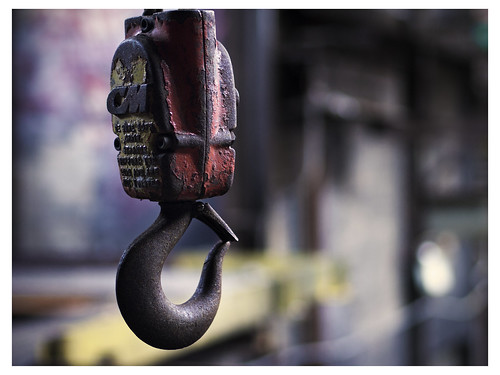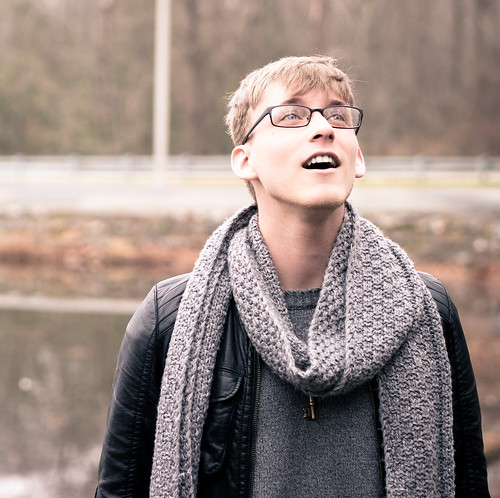What a truly exhausting, yet enthusiastic year this has been.
Yesterday, like many of us, I was busy in the thick of celebrating the holidays was various circles of friends and family. A few days earlier I attended (and somehow wound up photographing) a dear friend's wedding and immediately afterward spending time with one side of my family for their early Christmas festivities. Cruising down from 4 hours north, a friend of my better half and mine came down to spend the week with us over Christmas time in what has been a non-stop binge of movies, video games and delicious food. And yesterday, as expected, more time was spent with the remaining side of my family in an enjoyable parade of giddy kids who were surprisingly open to the idea of smiling for the camera. What a holiday!
Naturally gifts were exchanged, and en lieu of my desperate push towards legitimizing all the time I devote to photography and its practice, the assortment of gifts I received this year were very specific assets that have been like missing links, holes that needed to be filled but I've always been too stubborn to buckle down and purchase them. And, oh, are they welcome additions to my toolbox!
Long as I've been doing real estate work, I've always just managed to make certain scenes work, often situations with a large, bright window with sunlight pouring directly in it. A situation where some measure of bounce flash for help tame the exposure. And much as I love the CFL studio lights I own, there's always been the want to take the stands and lights on-location, somewhere they would ultimately end up uselessly deprived of a power outlet. I'm extremely pleased to announce that these scenarios are no longer of issue or concern, and part of what I'm going to coyly dub my "Business Gift Pack" were a pair of high-powered manual speedlights, paired with radio triggers, and a new set of sturdy, rugged light stands with speedlight mounts (with umbrella slots) and sandbags for when shooting in the field. At least, a field-able portrait kit is at my disposal, and never again will I fret at sunlight invading a room through the window.
They couldn't have come at a better time in my ongoing endeavor to establish a strong photography business. Earlier this year, in February I believe, I wrote a long, elaborate business plan as a sort of guide to determine what and how I wanted to grow as a business entity. A very sizable portion of that plan focused on portrait work, both candid and studio, as being a sort of bread-and-butter element of my efforts. As the year went on, my focus shifted much as it should be expected to over time. I had one major commercial job and for a good couple months following I was enamored with the idea of pursuing commercial work, and only in the past month or so have I really settled on the fact that pursuit of commercial work may very well be the great lost cause that ruins many a rising photographer. With that hopeless ambition out of my system, however, I'm once again back to basics, refocused on my original plan and aiming to open up my business to a new market.
Over the next month or so I plan to keep busy perfecting a process by which to handle formal, paid portrait photography work. Now, granted, my "test subjects" are all currently friends or people I otherwise know already, thus negating the spell of woe that is breaking the ice on initial meeting, however I am confident that easing into a shoot, bringing the subject to a comfortable point whereby the images just flow, is something I wouldn't find my difficulty achieving what with my experience in conversing and easing the minds of real estate clients I've met (and in some cases befriended) over the last year. Producing that kind of ease, that peace of mind, I suspect would be the most difficult aspect of any portrait shoot, so at least if I can perfect the shooting process itself to the point where it's no conscious worry on my part all real effort and focus can be directed to the subtle mind games involved in ensuring the subject is most comfortable with where they are, who they're with, what they're doing.
With the heavy hitters in lighting equipment graciously gifted to me, last night I took it upon myself to complete my kits completely with the frivolous little things missing from my camera bags. Red filters, step-up rings for lenses thus far lacking in proper filter usage (M. Zuiko 45mm f/1.8, I'm looking at you), and lens hoods and accessory port attachments for my Nikon V1. Another lovely gift I received this holiday was the Nikkor 1 30-110mm f/3.8-5.6 lens, something that seems outside of my usual circle of appreciation for fact of it being a zoom and long telephoto, but given the nature of the V1 and the simple fact that, sometimes, you really do need a long lens, it adds an entirely new realm of capability for me, something I've not had since dropping DSLRs 3 years ago. With the crop factor in mind, this 30-110mm lens functions much more like a 70-300mm telephoto, and paired with the V1's breakneck speed (I mean, come on, 60FPS in electronic shutter mode...) photographing wildlife and sports has once again become a realistic possibility for me. And, even though it may be a zoom, the uniquely close focus distances of all Nikon 1 system lenses makes it a fantastic portrait zoom capable of producing appropriately shallow depth of field based not on aperture, but the element of DOF rendition that far too many seem to neglect, proximity. I would be lying were I to say I was not absolutely excited to try it out. Inclement weather forecasts be damned.
Admittedly, the surge to completion of my V1 kit has befuddled my mind a bit. Originally, when the V1's price finally dropped down to something I considered worth investing, my idea was that the V1 would effectively replace my point-and-shoot Olympus XZ-1 as the carry around camera of choice. Oddly, that doesn't seem to be the direction I ultimately took with the 1 system at all. Once all of the items I ordered arrive, I will have essentially a miniaturized clone of my old D40 kit that I will forever regret selling in 2009. A pair of kit zooms, 27-80mm and 80-300mm equivalents, a nifty fifty, flash gun for on-the-spot TTL metered shots indoors and a remote for if and when the camera ever finds itself on a tripod. This flies in the face of what the system was meant to be to me. I find myself experiencing the same perplexed stupor as the well known Steve Huff - "I did not expect to love this camera". Something about its brutally simple, utilitarian appearance, it's down to basics, down to business function... it is simply a fun camera to shoot. Megapixels shmegapixels, I was printing 16x20" prints just fine with my D40 just a few years ago. And with that gargantuan battery I feel completely comfortable leaving the house with one for the day and having plenty of charge on it for even a late night's worth of long exposures.
This, of course, makes my brain itch slightly when I consider how much I do still love my Olympus kit. It's difficult for me to maintain multiple camera systems as I imprint a sort of emotional value to each. When I use one overly much, part of me feels that I'm leaving the other feeling neglected, and that would absolutely describe how I feel about my poor E-P3, stuffed in a bag and only ever seeing the light of day for real estate jobs and the occasional night shoot. With the remote coming in, I fully intend to try night shooting with the V1. Miserable as I felt it was the last time I used it on a tripod, I suspect that after spending so much time with the camera and learning its nuances I'd be capable of working with it more comfortably now than before. This all, of course, solidifies my real quandary - why am I maintaining two similarly capable systems?
In the end it really does come down to the abstract of what feels right at the time. That kind of nebulous logic flies in the face of my devotedly logical, rationalizing brain, however, and so I remain in a state of constant question as to which camera really does best suit my needs at a given point. Looking at things from that logical standpoint, I can say that the V1's high ISO performance and formula car shutter speeds make it ideal for anything moving, and its image quality is not terribly apart from the E-P3's when practicing good technique. In the Olympus, court, however, the optics are far superior, and while it may not be a champion of high ISOs, it is an incredibly pleasant camera to work with when the subject matter is still, static, and the resultant image a thing of intention, not simply reaction. This of course begs the question "Then why not just get an OM-D and close the gap", to which... I am stumped. Speechless. You got me. Much as I would like to own an OM-D... I don't. And when I eventually do upgrade my MFT body... will the V1 feel kicked to the wayside next? I find myself dwelling on quotes about being spread too thin... who knew just 2 systems would polarize this much?
In the end, of course, I can at least state with confidence that, although I enjoy shooting with the V1 and do tend to carry it around and shoot with it more, the photos I'm taking are rarely of a superb artistic quality. It tends to be the camera I shoot family gatherings and social events with, not art so much as function. The E-P3, on the other hand, remains my go-to for intentioned artistic shooting and working jobs, and it will likely remain that way even once my MFT body is upgraded to the next PEN or the OM-D or whatever fits the bill. The V1 remains my little experiment, and while it may take some attention and budget away from solidifying my MFT assets, it still seems a worthwhile venture. After all, the best camera is the one you have on you all the time, and I certainly carry the V1 around far more willingly than lug around the MFT bag.
How typical... I steer away from DSLRs because they're too big and heavy, and sure enough I'm starting to treat MFT the same way because there's a new champion of tiny sensor goodness in the ring. My logic centers are an absolute mess!
Subscribe to:
Post Comments (Atom)







No comments:
Post a Comment